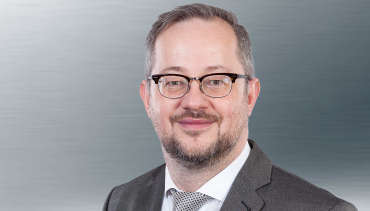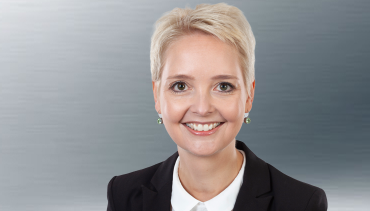Press release: Key figures for the 2021 financial year for the Dillinger Group and the Saarstahl Group
Achieving the turnaround: Dillinger and Saarstahl significantly improve operating profit
12 April 2022
• The Saarstahl and Dillinger Groups can look back on a successful 2021 financial year.
• Net sales increased significantly: in the Dillinger Group from €1.645 billion to €2.281 billion and in the Saarstahl Group from €1.684 billion to €2.777 billion.
• Dillinger Group closed the financial year with an EBITDA of €201.1 million and an EBIT of €80.1 million. The Saarstahl Group recorded an EBITDA of €281.5 million and an EBIT of €187.9 million.
• The cost-cutting program initiated in 2019 has been implemented quickly and effectively. The final measures will be completed in 2022.

The Dillinger Group (Aktien-Gesellschaft der Dillinger Hüttenwerke (Dillinger) with its subsidiaries) and the Saarstahl Group (Saarstahl AG with subsidiaries) achieved a successful financial year in 2021. After two difficult years marked by the pandemic in 2019 and 2020, a significant recovery in the market was experienced. After years of high losses, the companies achieved the targeted turnaround and closed 2021 with decidedly positive results. The cost-cutting program initiated in 2019 was implemented quickly and effectively as announced and achieved the defined targets. The final measures of the program will be completed in 2022.
The acquisition of Saarstahl Rail and Saarstahl Ascoval by SHS / Saarstahl from Liberty Steel in August 2021 has enabled the Group to close gaps in the product portfolio and occupy new market segments. Saarstahl Ascoval’s carbon-reduced steel and the electric arc furnace installed there has already enabled the company to offer customers steel produced with a climate-compatible method as the basis for their products and value chains. With the rails from Saarstahl Rail, we are helping drive the mobility revolution through production of premium rails – also using carbon-reduced steel from Ascoval. Customers such as SNCF and other operators already depend on the rails from Lorraine.
Dr. Karl-Ulrich Köhler, Chairman of the Board of Management of Dillinger and Saarstahl, explained the 2021 business figures at the Group’s joint annual press conference: “The companies have achieved the turnaround despite the ongoing pandemic and the constant increase in raw material prices throughout the year. Dillinger and Saarstahl will close 2021 with the targeted EBITDA margin of 12 percent. This goal was reached through the will to achieve on the part of all participants and confirms the competitiveness of the companies. The task now is to build on this result and achieve long-term economic success. We need this basis to accomplish the upcoming transformation to carbon-neutral steel production.”
Chief Financial Officer Markus Lauer added: “The 2021 financial year was a successful year for Dillinger and Saarstahl. This is particularly evident in the operating result (EBIT), which the companies increased year-on-year by €632 million. This success was achieved despite reduced shipment volumes compared to the strong sales in 2017 and 2018 via adapted and flexible operating points in production and value-based pricing. Now we are aiming to permanently stabilize the EBITDA margin at the level achieved.”
Chief Human Resources Officer and Labor Director Joerg Disteldorf explained the measures in his area of responsibility: “We have worked along with employee codetermination on the socially responsible implementation of savings in the area of human resources as part of the cost-cutting program launched in 2019 and have already implemented most of the measures. Thanks to the good cooperation, successes were achieved collectively and outsourcing projects that originally had been planned were dispensed with. As a result, a sustainable future scenario has been developed for the Saarschmiede plant. Our aim remains to fulfill the intergenerational contract and safeguard long-term employment in Saarland’s steel industry. With around 500 apprentices at Dillinger and Saarstahl, we remain the most important job-training workplace in the region.”
Business performance/Development of sales and earnings figures
Dillinger and Saarstahl profited from the strong economy and increased demand from the automotive, energy and mechanical engineering sectors. The high demand led to positive price development in the individual segments. This trend was already apparent for Saarstahl wire rod and bar steel in the final months of 2020 and continued steadily in 2021. This development is primarily due to the restart of production in the automotive industry. At Dillinger, the recovery began in the first half of 2021. The driver here was steadily increasing demand for super heavy plate from the offshore wind sector. Demand from other core consumer segments, such as mechanical engineering, steel construction and trade, also continued to rise. Only demand from the line pipe sector continued to decline in 2021. Adapting and making the operating points of Dillinger and Saarstahl more flexible created an effective instrument for controlling and quickly adapting production to changes in the market.
Net sales of the Dillinger Group rose by 38.6% to €2.281 billion (previous year: €1.645 billion). EBITDA (earnings before interest, taxes, depreciation and amortization) of the Dillinger Group amounted to €201.1 million (2020: -€68.9 million) and the EBIT, i.e., earnings before interest and taxes, to €80.1 million (2020: -€192.8 million). Investments in the Dillinger Group amounted to €42.2 million (2020: €41.7 million).
Net sales of the Saarstahl Group rose by 64.9% to €2.777 billion (previous year: €1.684 billion). EBITDA (earnings before interest, taxes, depreciation and amortization) of the Saarstahl Group amounted to €281.5 million (2020: -€70.4 million) and the EBIT, i.e., earnings before interest and taxes, to €187.9 million (2020: -€171.2 million). Investments in the Saarstahl Group amounted to €37.6 million (2020: €61.6 million).
The investments of Dillinger and Saarstahl in 2021 were influenced by the overall pandemic conditions. Even so, the planned projects were successfully completed. In addition to investing in several new cranes at the LD steel plant in Völklingen and the Burbach rolling mill, investments were made in measures to protect the environment and lower carbon emissions. In the area of Zentralkokerei Saar GmbH (ZKS), for example, the high-pressure coke gas scrubbing system was commissioned and the circular cooler dedusting system with heat recovery at sinter plant 3 (investment €28 million) of ROGESA Roheisengesellschaft Saar (ROGESA) – a joint subsidiary of Dillinger and Saarstahl – was completed with the final inspection in September 2021.
Outlook for 2022
The Dillinger Group and Saarstahl Group started the new financial year with good demand and continued high margins. The companies continue to expect good capacity utilization in 2022. However, Russia's attack on Ukraine and the resulting war and its consequences may cause a massive slowdown in economic development and have an impact on businesses. The coronavirus may also continue to influence the economy. Due to this situation, further significant price increases in raw material procurement and energy costs are to be expected. The integration and strategic alignment of Saarstahl Rail and Saarstahl Ascoval is being expedited and new market segments are being developed. Dillinger will continue to invest in the growing offshore wind segment and is expanding production of super heavy plate for this market.
The path to climate-neutral steel
Dillinger and Saarstahl are continuing to work toward the goal of carbon-neutral steel production in line with EU climate targets and are initiating the next steps in the transformation. The companies have developed a three-phase strategy to achieve the goal of carbon-neutrality by 2045. An initial project outline for an electric furnace project at the Dillingen plant has already been submitted for evaluation. An interdisciplinary project group has begun work on the transformation project. To ensure that the transformation succeeds, we will increasingly be seeking and establishing a structured dialog with policymakers so that the foundation for success can be established jointly at both the federal and EU levels. There is an urgent need to quickly ensure entry into the industrial ramp-up of the transformation by creating appropriate policy framework conditions. The policy decisions in Berlin and Brussels must be made by mid-2022. Clarity must therefore be achieved quickly on a number of points. EU emissions trading must be adapted to the requirements of the transformation. What is required is reliable carbon leakage protection with the cost-free allocation of certificates as a central instrument in the ramp-up phase until 2030. The free allocation of emission allowances and the electricity price compensation should be continued at the level envisaged until 2030 within the carbon border adjustment mechanism (CBAM). The benchmark definitions must be retained and must not include any low- or zero-carbon technologies. There is a risk that the hot metal benchmark will be lowered by more than 40%, resulting in a further shortage of allowances and immense additional costs at the expense of the transformation. Climate protection contracts must be designed so that the new processes are also internationally competitive and increased operating costs and investment risks are cushioned. The blockade at the EU Commission on steel industry projects (Innovation Fund and IPCEI) must be dissolved. There must be no cuts or delays in the transfer of IPCEI projects to the new aid framework. Moreover, a steel transformation fund must be created that ensures planning security throughout the upcoming legislative periods until 2030.
Dr. Karl-Ulrich Köhler is nevertheless optimistic: “The products of Dillinger and Saarstahl are already part of the energy and mobility transition today. We will continue to systematically develop along this path. We will continue to pursue the path to climate-neutral production and achieve the next milestones along the way. The transformation is the greatest challenge of our time. If we succeed in creating the urgently needed framework conditions together with policymakers in Germany and Europe, we will meet this challenge and achieve success.”
|
Dillinger Group by the numbers |
|
2020 |
2021 |
|
Purchases of hot metal, Dillinger1) Crude steel production, Dillinger Heavy plate production, Dillinger - of which in Dillingen - of which in Dunkirk (Dillinger France) Shipped/Sales of heavy plate, Dillinger Net sales (consolidated) Workforce, Dillinger Group Workforce, Dillinger (not including trainees) Trainees, Dillinger Group EBITDA3) EBIT3) Equity ratio Investments |
kt kt kt kt kt kt € million 31/12 31/12
31/12 € million € million % € million |
1,561 1,816 1,406 1,000 406 1,382 1,645 6,196 3,925 256 -68.9 -192.8 62.1 41.7 |
1,981 2,281 1,782 1,237 545 1,659 2,281 5,645 3,565
246 201.1 80.1 62.6 42.2 |
1) Total hot metal production by ROGESA Roheisengesellschaft Saar mbH amounted to
4,260 kt (2020: 3,194 kt).
2) Additional employees from the joint companies with Saarstahl: 1,052 (2020: 1,083) employees
3) Excluding equity update of the Saarstahl Group
|
The Saarstahl Group by the numbers |
|
2020 |
2021 |
|
Purchases of hot metal, Saarstahl AG1) Crude steel production Rolled steel production Shipment (Saarstahl AG only) Net sales Workforce Saarstahl Group (not including trainees) Workforce Saarstahl AG (not including trainees) Trainees Saarstahl Group EBITDA2) EBIT2) Equity ratio Investments |
kt kt kt kt € million 31/12
31/12
31"12 € million € million % € million |
1,633 1,879 1,668 1,754 1,684 5,332
3,827
253 -70.4 -171.2 71.2 61.6 |
2,280 2,638 2,430 2,418 2,777 5,214
3,738
227 281.5 187.9 70.0 37.6 |
1) Total hot metal production by ROGESA Roheisengesellschaft Saar mbH amounted to
4,260 kt (2020: 3,194 kt).
2) Additional employees from the joint companies with Dillinger: 1,052 (2020: 1,083) employees
3) Excluding equity update of DHS Group (Dillinger Group)

Martin Reinicke

Juliane Wernet
Dillinger is a world leader in the manufacture of steel heavy plate for the steel construction, machine manufacturing, offshore, offshore wind power and line pipe sectors. Saarstahl is a worldwide manufacturer of premium wire rod and bar steel for the automotive industry, the construction industry, and for general machine manufacturing. Both companies belong to SHS - Stahl-Holding-Saar and want to contribute with innovative products and intelligent technologies – together with their customers – to finding answers to global challenges including climate protection, energy efficiency, mobility and safety. More information can be found at www.dillinger.de or www.saarstahl.de


